Related Research Articles

The Chinese Civil War was fought between the Kuomintang-led government of the Republic of China and the forces of the Chinese Communist Party (CCP), with armed conflict continuing intermittently from 1 August 1927 until 7 December 1949, resulting in a CCP victory and control of mainland China in the Chinese Communist Revolution.
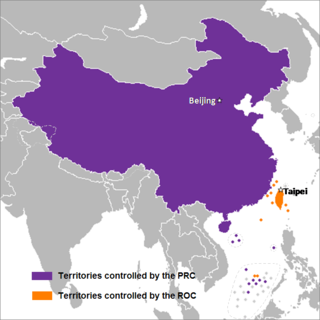
Chinese unification, also known as Cross-Strait unification or Chinese reunification, is the potential unification of territories currently controlled, or claimed, by the People's Republic of China and the Republic of China ("Taiwan") under one political entity, possibly the formation of a political union between the two republics. Together with full Taiwan independence, unification is one of the main proposals to address questions on the political status of Taiwan, which is a central focus of Cross-Strait relations.

The Sino-Soviet split was the gradual deterioration of relations between the People's Republic of China (PRC) and the Union of Soviet Socialist Republics (USSR) during the Cold War. This was primarily caused by doctrinal divergences that arose from their different interpretations and practical applications of Marxism–Leninism, as influenced by their respective geopolitics during the Cold War of 1947–1991. In the late 1950s and early 1960s, Sino-Soviet debates about the interpretation of orthodox Marxism became specific disputes about the Soviet Union's policies of national de-Stalinization and international peaceful coexistence with the Western Bloc, which Chinese founding father Mao Zedong decried as revisionism. Against that ideological background, China took a belligerent stance towards the Western world, and publicly rejected the Soviet Union's policy of peaceful coexistence between the Western Bloc and Eastern Bloc. In addition, Beijing resented the Soviet Union's growing ties with India due to factors such as the Sino-Indian border dispute, and Moscow feared that Mao was too nonchalant about the horrors of nuclear warfare.
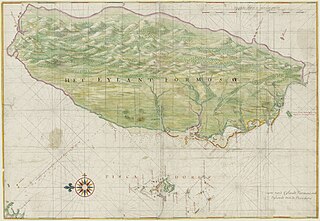
As a result of the surrender and occupation of Japan at the end of World War II, the islands of Taiwan and Penghu were placed under the governance of the Republic of China (ROC), ruled by the Kuomintang (KMT), on 25 October 1945. Following the February 28 massacre in 1947, martial law was declared in 1949 by the Governor of Taiwan, Chen Cheng, and the ROC Ministry of National Defense. Following the end of the Chinese Civil War in 1949, the ROC government retreated from the mainland as the Chinese Communist Party (CCP) proclaimed the establishment of the People's Republic of China. The KMT retreated to Taiwan and declared Taipei the temporary capital of the ROC. For many years, the ROC and PRC each continued to claim in the diplomatic arena to be the sole legitimate government of "China". In 1971, the United Nations expelled the ROC and replaced it with the PRC.

The First Taiwan Strait Crisis was a brief armed conflict between the People's Republic of China (PRC) and the Republic of China (ROC) in Taiwan. The conflict focused on several groups of islands in the Taiwan Strait that were held by the ROC but were located only a few miles from mainland China.
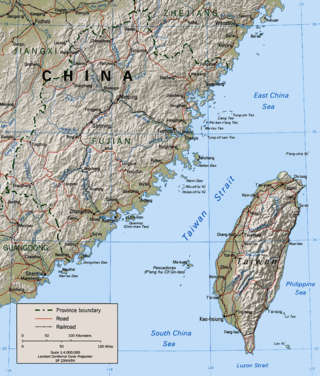
The Second Taiwan Strait Crisis, also called the 1958 Taiwan Strait Crisis, was a conflict between the People's Republic of China (PRC) and the Republic of China (ROC). In this conflict, the PRC shelled the islands of Kinmen (Quemoy) and the Matsu Islands along the east coast of mainland China in an attempt to take control of Taiwan from the Chinese Nationalist Party, also known as the Kuomintang (KMT), and to probe the extent of the United States' defense of Taiwan's territory. A naval battle also took place around Dongding Island when the ROC Navy repelled an attempted amphibious landing by the PRC Navy.

The Formosa Resolution of 1955 was a joint resolution passed by the U.S. Senate and signed by U.S. President Dwight D. Eisenhower on January 29, 1955, to counteract the threat of an invasion of Taiwan by the People's Republic of China (PRC). The resolution gave the U.S. president the authority "to employ the Armed Forces of the United States as he deems necessary for the specific purpose of securing and protecting Formosa and the Pescadores against armed attack [by the Communists]".
The history of the People's Liberation Army began in 1927 with the start of the Chinese Civil War and spans to the present, having developed from a peasant guerrilla force into the largest armed force in the world.

Sino-Soviet relations, or China–Soviet Union relations, refers to the diplomatic relationship between China and the various forms of Soviet Power which emerged from the Russian Revolution of 1917 to 1991, when the Soviet Union ceased to exist.
The Battle of Dengbu Island was a conflict between the Republic of China Army and People's Liberation Army over Dengbu Island near mainland China. This conflict occurred from 3 November 1949 to 5 November 1949 and resulted in a Republic of China victory.
The Battle of Hainan Island occurred in 1950, during the final phase of the Chinese Civil War. The People's Republic of China (PRC) conducted an amphibious assault on Hainan Island on 16 April, assisted by the Hainan communist movement which controlled much of the island's interior, while the Republic of China (ROC) controlled the coast; their forces were concentrated in the north near Haikou and were forced to retreat south after the landings. The communists secured Hainan's southern cities by the end of the month and declared victory on 1 May.
Project Guoguang was an attempt by the Republic of China (ROC), based in Taiwan, to reconquer mainland China from the People's Republic of China (PRC) by large scale invasion. It was the most elaborate of the ROCs plans or studies to invade the mainland after 1949. Guoguang was initiated in 1961 in response to events involving the PRC, particularly the Great Leap Forward, the Sino-Soviet split, and the development of nuclear weapons. Guoguang was never executed; it required more troops and material than the ROC could muster, and it lacked support from the United States. The use of a large scale invasion as the initial stage of reunification was effectively abandoned after 1966, although the Guoguang planning organization was not abolished until 1972. The ROC did not abandon the policy of using force for reunification until 1990.

The territory of the People's Republic of China (PRC) has frequently been revised since its formation on 1 October 1949.

The Battle of Chamdo occurred from 6 to 24 October 1950. It was a military campaign by the People's Republic of China (PRC) to take the Chamdo Region from a de facto independent Tibetan state. The campaign resulted in the capture of Chamdo and the annexation of Tibet by the People's Republic of China.

The Tibet Area is a province-level administrative division of China since 1950. It was created after the invasion of Tibet by the Republic of China (1912–1949), and nominally includes the Ü-Tsang and Ngari areas, but not the Amdo and Kham areas. The territories were merely claimed by the ROC, but actually controlled by an independent Tibet with a government headed by the Dalai Lama in Lhasa. The ROC was defeated during the Chinese Civil War; it retreated to Taiwan and lost control of mainland China to the People's Republic of China (PRC) in 1949; afterwards, the ROC continued to claim Tibet.

The retreat of the government of Republic of China to Taiwan, also known as the Kuomintang's retreat to Taiwan or the Great Retreat in Taiwan, refers to the exodus of the remnants of the then-internationally-recognized Kuomintang-ruled government of the Republic of China (ROC) to the island of Taiwan (Formosa) on December 7, 1949, after losing the Chinese Civil War in the Chinese mainland. The Kuomintang, its officers, and approximately 2 million ROC troops took part in the retreat, in addition to many civilians and refugees, fleeing the advance of the People's Liberation Army of the Chinese Communist Party (CCP). The CCP, who now effectively controlled most of Mainland China, spent the subsequent years purging any remnant Nationalist agents and bandits in western and southern China, solidifying the rule of the newly established People's Republic of China.
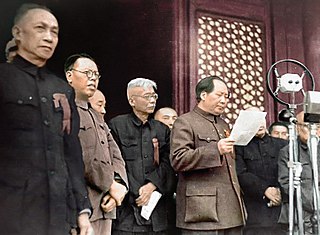
The proclamation of the People's Republic of China was made by Mao Zedong, the Chairman of the Chinese Communist Party (CCP), on October 1, 1949, in Tiananmen Square in Beijing. The government of a new state under the CCP, formally called the Central People's Government, was proclaimed by Mao at the ceremony, which marked the foundation of the People's Republic of China.
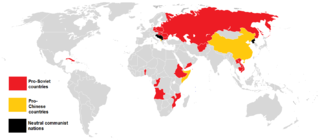
Relations between the People's Republic of China and the Soviet Union underwent significant change from 1969 to 1991, from open conflict to bitter détente to diplomatic partners by 1989. Relations between the Soviet Union (USSR) and Chinese Communist Party (CCP) dated back to the founding of the CCP in Shanghai in 1921, a meeting conducted under the supervision of the Communist International. The Soviets remained cautious partners with the rising CCP throughout the 22 years of the Chinese Civil War, and the USSR was the first nation to recognize the People's Republic of China in 1949. The following year saw the signing of the Sino-Soviet Treaty and founding of the Sino-Soviet alliance as well as the beginning of a decade of economic cooperation between the two nations.

Chinese irredentism involves irredentist claims to the territories of former Chinese dynasties made by the Republic of China (ROC) and subsequently the People's Republic of China (PRC).
References
Bibliography
- Bernstein, R. (2015). China 1945: Mao's revolution and America's fateful choice. Vintage.
- Fairbank, J. K., & Goldman, M. (2006). China: A new history (2nd ed.). Harvard University Press.
- Fenby, J. (2009). Modern China: The fall and rise of a great power, 1850 to the present. Harper Perennial.
- Fenby, J. (2014). Chiang Kai Shek: China's generalissimo and the nation he lost. Carroll & Graf.
- Gillin, D. (2011). The Last Imperial War: Warlords, Revolutionaries, and the Making of Modern China, 1927–1950. Bloomsbury Academic.
- Griffith, S. G. (2013). Chinese Civil War and the Korean War: Military Strategy and Tactics. Taylor & Francis.
- Hsiung, J. C., & Levine, S. I. (Eds.). (1992). China's Bitter Victory: The War with Japan, 1937–1945. M.E. Sharpe.
- Lawrance, A. (2017). The Chinese Civil War 1945–49. Bloomsbury Academic.
- Lynch, M. (2010). The Chinese Civil War, 1945–49. Osprey Publishing.
- Mao, Z., & Schram, S. (1966). Quotations from Chairman Mao Tse-tung. Little Red Book.
- Meisner, M. (1999). Mao's China and after: A history of the People's Republic. Free Press.
- Mitter, R. (2013). China's war with Japan, 1937-1945: The struggle for survival. Harvard University Press.
- Schaller, M. (1989). The US Crusade in China, 1938–1945. Columbia University Press.
- Schram, S. R. (1966). Mao Tse-tung. Simon and Schuster.
- Spence, J. D. (1991). The search for modern China. W.W. Norton & Company.
- Tuchman, B. W. (2014). Stilwell and the American experience in China, 1911–45. Random House.
- Van de Ven, H. (2017). The Chinese Civil War: A military history. Cambridge University Press.
- Van de Ven, H. (2003). War and nationalism in China, 1925–1945. Routledge.
- Westad, O. A. (2003). The Chinese Civil War: 1945–1949. Basic Books.
- Zarrow, P. (2005). China in war and revolution, 1895–1949. Routledge.
Notes
- ↑ See Outline of the Chinese Civil War for a full outline of the miliary history of the event.
- ↑ The exiled Tibetan government in India calls The battle "The invasion of Tibet by the People's Liberation Army of China".
- ↑ Years represent the period the individual was influencial and in a position of power in the People's Republic of China.
Citations
- ↑ Li, Xiaobing (2012). China at War: An Encyclopedia. Bloomsbury Academic. p. 295. ISBN 9781598844153. Archived from the original on 11 April 2023. Retrieved 27 June 2015.
- ↑ Lew, Christopher R.; Leung, Pak-Wah, eds. (2013). Historical Dictionary of the Chinese Civil War. Lanham, Maryland: The Scarecrow Press, Inc. p. 3. ISBN 978-0810878730. Archived from the original on 11 April 2023. Retrieved 26 June 2017.
- ↑ "Chinese Reds Promise the 'Liberation' of Tibet". The New York Times. 3 September 1949.
- ↑ "Taiwan's President Speaks at Cornell Reunion Weekend". Cornell University. Archived from the original on 10 July 2012. Retrieved 20 July 2010.